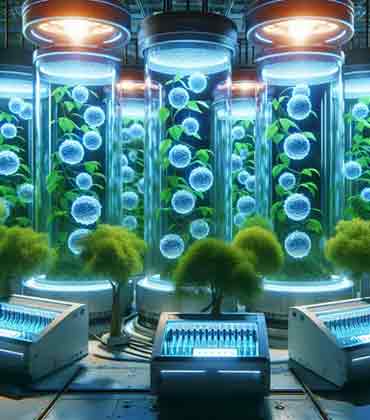THANK YOU FOR SUBSCRIBING
By Steven Lee, Head of IT & Digital Solutions, Compass Group
Revolutionizing the Catering Industry: How Our Recipe...
By Arun Ahuja, Senior Vice President & General Manager, Healthcare & Corporate at Transact + CBORD
The Path of Least Resistance: Connecting Hospital Food...
By David Hermann, ANZ Electrical, Instrumentation and Process Automation Manager, Goodman Fielder
Digital Transformation and Industry 4.0 in Manufacturing

Building Foundational Elements For Sustainable Food Safety Management System
Olawumi Wumi Yusuff, Director, Food Safety, Ferrara

 Olawumi Wumi Yusuff, Director, Food Safety, Ferrara
Olawumi Wumi Yusuff, Director, Food Safety, FerraraThe data on food safety recalls, and trends show that establishing and implementing a robust food safety management system is still challenging. According to Sedgwick's recall index report, FDA food recalls rose marginally by 2.2 percent from 414 in 2021 to 423 in 2022. While events remained constant in 2022, defective units surged 700.6 percent, from 52.1M to 416.9M. The recall index report also indicates undeclared allergen, bacterial and foreign material contamination were the leading causes. The consequence of not having a strong foundation for a food safety management system is very costly. Recalls involve financial cost, reputational cost, or damage that can be irreversible. In addition, recalls disrupt the food supply chain, divert food safety professionals' attention to firefighting, and take up time that should have been spent on continuous improvement initiatives.
A food safety management system is a set of programs that reinforces an organization’s control of food safety hazards and ensures that its products are safe and fit for human consumption. Consumers expect their food to be safe, and this is non-negotiable! Achieving an effective and sustainable food safety management system starts with senior leadership’s commitment. Management’s commitment to doing the right things is foundational and fundamental in building strong, sustainable prerequisite programs and developing and implementing preventive control strategies such as HACCP/HARPC. These ‘rights things’ might include; food safety ownership across the enterprise, effective communication (top-down and bottom-up) across the organization, and provision of appropriate and adequate resources (time, finances, and people).
Policies and procedures defined within an organization's prerequisite programs and preventive controls must be specific to the profile of their products, manufacturing processes, and environment. Achieving food Safety is a product and process-specific activity! Also equally important is the validation and verification of these programs to establish efficacy and effectiveness.
Processes are only as strong as how well they are implemented and consistently followed by people.
Conduct competency gap assessments to identify the knowledge deficits and then develop training and refresher plans based on the outcome of that assessment. The importance of engaging with and involving your people to foster collaboration and promote a sense of ownership cannot be overemphasized. Another key aspect of developing a sustainable food safety system is empowering workers/team members to speak up and take action. Recognition is also critical to encourage and reinforce ‘doing things right.’
The following are some key prerequisite programs, preventive measures, and governance that organizations must implement for sustainable food safety:
Ingredient Hazard Analysis (IHA)
Risk assessment is a very important concept in food safety. Food safety risk ranking is the systematic analysis and ordering of foodborne hazards and/or foods regarding the potential public health threat based on the likelihood of occurrence and severity of the adverse impacts on human health. Implementing adequate preventive controls depend on accurately determining food safety hazards and appropriate risk level. For example, the risk might be ranked as High, Medium, or Low. Asking the right questions based on an exquisite understanding of your product, its manufacturing processes, and its intended use, reviewing appropriate documents (internal and external), and deep dive into the supplier’s historical data and related information are some of the key steps in food safety risk assessments. FDA Appendix 1 (Hazard Analysis and Risk-Based Preventive Controls for Human Food: Draft Guidance for Industry) is a great resource for food safety hazards related information applicable to various product categories. There are also digital platforms trending in the food industry, such as Food Chain ID™, Horizon scan™, and Decernis™ - food fraud databases as tools to facilitate information gathering, especially for ingredients sourced globally.
Sanitary Design Standard
This provides guidelines on the design and construction of buildings, infrastructures, and equipment to promote cleaning effectiveness, efficiency and prevent cross-contamination of food products. Designs are unique for different product and process applications. For example, equipment design for meat and poultry processing is not identical to confectionery. Different soil profiles demand different cleaning methods and have different chemical requirements. A standardized checklist for factory assessments at the manufacturer and during installation at the plants with cross-functional sign-offs, including engineering, quality, food safety, and operations, must be in place. Early involvement and crossfunctional collaboration are key for successful and consistent implementation.
Environmental Monitoring Program (Pathogens and Indicators)
Some people say they have never had a positive hit in their facilities. It could be a good thing but also a bad one. This begs whether they are swabbing enough, swabbing the right locations, or using the right method. A robust EMP program must be risk-based, including factors such as the age of the facility or equipment, type or nature of the product, processing type, hygienic zoning, cleaning method or frequency, and historical data. The number of swabs across zones 1-4 and frequency should be appropriate for the risk level defined. Air monitoring in the processing or surrounding areas is critical to identifying potential airborne micro risks. Another crucial aspect of EMP programs is data tracking and trending to identify the hot spots and follow up with adequate corrective actions.
Allergen Management Program
Food allergen recalls could occur due to cross-contact or exposure and undeclared allergen on product labels. It is imperative to have a comprehensive allergen management program end to end, from ingredients sourcing to finished product distribution. This includes but is not limited to major allergen declaration requirements for all suppliers, validated allergen cleaning and verification using rapid allergen-specific testing kits or finished product testing, formula and product verification, segregated production and storage areas, and production sequencing.
"Everyone has a responsibility for food safety regardless of function in the organization; food safety is not a one size fits all, assess the risk unique to the process, product, and environment and implement appropriate validated preventive controls"
Food Safety KPIs
There must be a continuous measure of performance to ensure the food safety management system is working as intended. Confirmed internal findings, Master Sanitation Schedule (MSS) completion rate, First Time Right (FTR), and Cost of Poor Quality (COPQ) are some of the food safety KPIs to routinely track and trend, and review at various management levels.
In summary, everyone is responsible for food safety regardless of function in the organization; food safety is not a one size fits all; assess the risk unique to the process, product, and environment and implement appropriate validated preventive controls. And most of all, never forget that no matter how robust and sustainable your food safety system is, it must be updated and changed. Food Safety is very dynamic. A new threat or challenge to your current systems might be approaching.
Read Also















